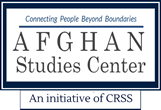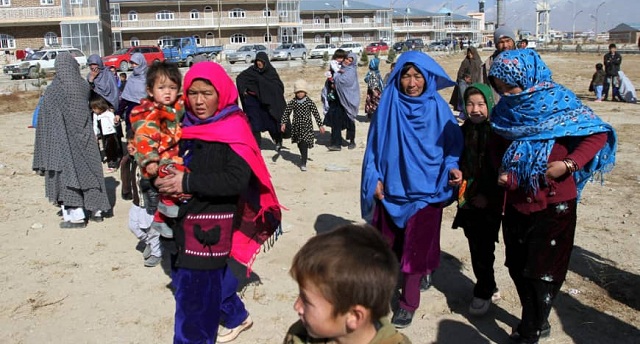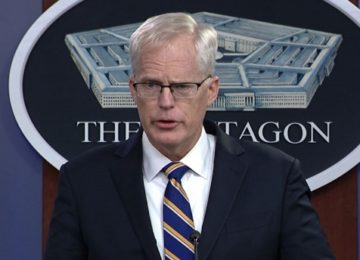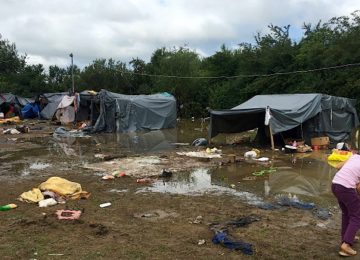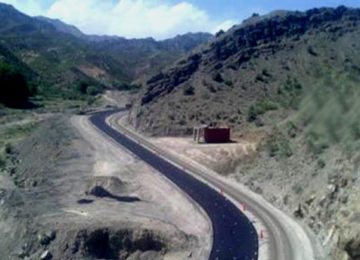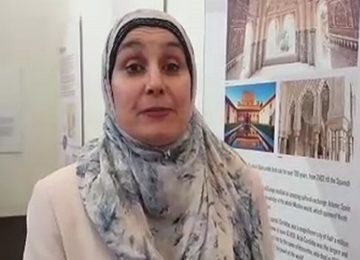November 29, 2018
The Taleban attacks on Hazara areas in Uruzgan and Ghazni were unprecedented in their reach and led to massive displacement. The attacks indicated a clear shift in the Taleban’s behaviour towards the Hazara areas, stimulating various hypotheses about their motives. In this second part of a series of two dispatches, AAN’s Ali Yawar Adili and Martine van Bijlert (with input from Thomas Ruttig, Fazal Muzhari and Ehsan Qaane) provide in-depth background and analysis of the attacks and their consequences. They conclude that the Taleban had long been planning to advance into the Hazara areas to expand territorial control and increase their revenues.
The Taleban attacks on the Hazara areas in districts within Uruzgan and Ghazni provinces were unprecedented – at least in recent times – in terms of the number of incursions, the number of casualties and the level of coordination (three areas at more or less the same time). The initial attack on the largely self-governing Hazara enclave in the northeast of Khas Uruzgan was in response to a visit by notorious commander Abdul Hakim Shujai (more about him below) – and possibly his behaviour towards Pashtuns while he was there. At the same time, it came in the context of increased pressure by the Taleban on the Hazara population in areas that had so far largely been left alone. Coming at a time when the government and the Taleban are talking about a possible peace process, the Taleban suddenly seemed keen to show their reach and to increase their local revenue streams. The attacks appeared to fly in the face of local agreements between Hazara populations and the Taleban to largely leave each other alone. The level of violence and the slowness of the government’s response have, moreover, fed into fears of ethnic targeting by the Taleban and ethnic bias from the government. In this second dispatch in a series of two, AAN unpacks the triggers of the attacks and analyses its consequences.
Shujai’s presence in Kondolan
Abdul Hakim Shujai is a notorious former Afghan Local Police (ALP) commander from Malestan (who headed the ALP forces in Khas Uruzgan until he was forced to resign). His visit to Khas Uruzgan on 27 October was the trigger for the first attack. As Rahmatullah Amiri from The Liaison Office (TLO) told AAN, “There are strong anti-Shujai feelings among [local] Pashtuns, who will try to attack him wherever he appears, even if they know that a hundred people will be killed.” This animosity towards him is a result of Shujai’s role as a member of the Afghan Security Guards, a militia recruited by US Special Forces outside the Afghan chain of command (from 2008 to early 2010; see AAN’s earlier reporting here) and, later, as one of the district’s ALP commanders (for more background see this April 2013 report by AAN about his case and the precarious Pashtun-Hazara relations in Khas Uruzgan). As described in AAN’s earlier reporting (see here and here) Shujai has been accused of numerous extrajudicial killings and abuses towards the local Pashtun population, both when he worked with the US special forces and as an ALP commander. According to TLO’s Amiri, “There were two types of operations: first, when Shujai joined the operations led by the US special forces, and second, when the special forces sent Shujai to carry out raids.” (1)
Although Shujai was not the only abusive ALP commander, and possibly not even the worst, he appears to have been particularly targeted by powerful Pashtun leaders and local MPs, who demanded that he be prosecuted for his abuses – most probably because he was a powerful Hazara commander. After sustained criticism he was relieved of his duties and an arrest warrant was issued against him, but for a long time he continued to move freely and was even rumoured to still be commanding his ALP forces. TLO’s Amiri told AAN that Shujai continued to visit his men who were mainly from Khas Uruzgan, seeking to still act as their “protector.”
There are conflicting reports as to why exactly Shujai was in the area this time and what he did while he was there. Former Daikundi governor Qurban Ali Uruzgani, who hails from Khas Uruzgan, as well as other sources, told AAN that there was a dispute between Pashtuns and Hazaras over the routing of an irrigation canal and water pipe. In the spring of this year, Pashtuns had apparently closed a water pipe that ran from the farmland of a man called Qurban Ali Akhlasi in Karez, a sub-village in the southwest of Kondolan, through their farmland. The Hazaras retaliated and closed the irrigation canal (this was also reported by Etilaat Roz). The Taleban had ruled that both sides should allow the water to flow, but the issue resurfaced recently, whereupon the Pashtuns turned to the Taleban and Akhlasi turned to Shujai. A local source told AAN that when visiting Kondolan, Shujai was accompanied by four elders from Payk and four elders from Sia Baghal, two Hazara-dominated villages in Khas Uruzgan – in addition to an unknown number of armed men – to help him solve the dispute. They indicated that the Taleban attack was unprovoked.
Other sources maintain that it was Shujai’s behaviour in the area that had provoked the attack, first towards the local population, who then called in the help of the Taleban. A Pashtun elder from Khas Uruzgan told AAN that Shujai had come to the area to solve the issues of a Hazara woman from Hussaini who had taken refuge in the nearby Pashtun village of Abparan (she was apparently fleeing abuse and she had hoped to be returned to her family). When the Pashtuns refused to return the woman, he said, Shujai went to Abparan where he searched and possibly burned several houses and took some sheep. This was also alluded to in a report by Pajhwok on 6 November which said that clashes had erupted over the case of a woman, after a number of local elders had gathered and that the Taleban had engaged in the fight later. A former Hazara official of Khas Uruzgan, however, told AAN on 17 November that the issue with the woman had been solved and had nothing to do with the Taleban’s attacks.
Villagers from Kondolan had a different story, saying Shujai’s men had run into a group of Pashtuns travelling from Hussaini to Kondolan bazar on 27 October and had killed three of them. Those who survived reported it to the Taleban. Others said the men had not been killed, but had been searched by Shujai when he encountered them on the road, after which they had reported the matter to the Taleban. According to a local source, the local Taleban first refused to take action, but after it came to the attention of the Taleban’s man in charge of military affairs for Khas Uruzgan, Mawlawi Rashed, he ordered the lower-level Taleban commanders to go after Shujai, and they attacked within the hour. (2)
The government mainly seems to have picked up reports of local Pashtuns responding to Shujai’s alleged misbehaviour – which could explain why the violence was initially treated as a local conflict. For instance on 29 October, the Dari service of the Voice of America (VoA) quoted Uruzgan’s NDS head, Abdul Qawi Omari, as saying that Shujai first attacked a Pashtun area and that “the Taleban with the help of local people started the fight against Shujai and his fighters.”
Others said Shujai had travelled to Kondolan for a security meeting (and possibly had meant to tend to the other – more minor – matters alongside the meeting). Khaleq Ibrahimi, who along with two other journalists had travelled to Malestan, told AAN on 18 November that the meeting had been called in response to the increasing influence of the Taleban’s commando-type ‘red unit (also known as ‘special sniper groups’; read AAN’s previous reporting on the shift in the Taleban’s strategy from a ‘front system’ to a ‘red unit system’ here) in Khas Uruzgan since the spring. Others mentioned that Mawlawi Rashed had been given a green light from the Quetta Shura to conduct more aggressive campaigns to collect zakat from the local Hazara population. According to an elder from Payk, the Taleban had recently sent two letters to Kondolan and Hussaini telling the population to decide whether they would cooperate with the Taleban – including the paying of ushr and the giving of young men to the jihad– or face the consequences. The elder said the people of Kondolan and Hussaini had invited Shujai to ask him whether he would defend them or whether they should surrender and agree to the Taleban’s demands. (3)
Shujai claimed something similar in an interview with VoA on 30 October, saying that he was engaged in a fight with the Taleban, not with the Pashtuns, and that he had wanted to set up a commission to resolve the increasing Taleban pressure on “our people in the area.” This, he said, was why he went there, but “the Taleban had plotted” and carried out an attack against him.
Deputy chief executive Muhammad Mohaqeq on 8 November criticised the Taleban for playing a double game: on the one hand “in coordination with local elements portrayed to the government that the fight with the Hazaras is an ethnic fight and conflict and that [the government] should not intervene” and on the other hand pretended to the world that their fight in Uruzgan and Jaghori or other Hazara-dominated areas was “not a systematic ethno-sectarian killing, but an attack against the bases and militias of Ashraf Ghani’s government.”
The Taleban expanding its reach into Hazara areas
Sources close to the Taleban told AAN that about three months ago, Mawlawi Rashed, the Taleban official in charge of military affairs for Khas Uruzgan, complained to the Taleban’s leadership council that the local Hazara population was refusing to pay ushr and zakat and received the green light for a more aggressive campaign to collect these taxes (including, reportedly, an additional land tax, calculated on the basis of acreage; ushr and zakat are calculated based on yield or income).
According to a former official from Khas Uruzgan, around 15 to 20 days before the fighting started, Rashed had already asked the people in Kondolan to pay 100,000 kaldars or Pakistani rupees (around 745 USD). The people could not afford it and had tried to reduce it to 60,000 kaldars. The Taleban including Rashed had also called to a meeting people from the other predominantly Hazara villages of Khas Uruzgan, such as Hussaini, Sewak, Ola wa Khawja Roshnayi, Sia Baghal, Haji Muhammad and Payk, in which they asked the people to pay ushr. The people told the Taleban that they would decide after three months during which the Taleban should not cause any trouble for them.
The population of Jaghori and Malestan had received a similar message from the Taleban. On 16 May 2018, the Taleban’s shadow governor of Ghazni, Haji Yusuf Wafa, sent a letter (AAN has seen a copy) to “all residents, respected ulema (religious scholars) and mujahedin of the districts of Malestan and Jaghori,” saying he had appointed three shadow officials for the areas. The letter introduced Abed as the military head (massoul-e nezami), Hafez Bashir as head of the military commission and Hamidi as civilian head of the two districts. The letter also said, “All mujahedin are duty-bound to obey [them] within the framework of sharia and the regulations of the Islamic Emirate and to continue the holy jihad.” (See also this report by Khabarnama).
On 25 June 2018, the Taleban in the Rasana area of neighbouring Gilan district sent a letter (AAN has seen a copy) to the elders of the Dah Murda area in Jaghori, saying they had been keeping their appointed officials waiting and asking the elders to come to Rasana bazar so “we can all come to an understanding.” On 27 June 2018, Muhammad Yunus Samim, head of the Association of Social Coherence of Jaghori, told AAN that some elders from Nawa, Anguri and Hutqul areas of Jaghori had indeed gone to Rasana to learn the details and had been told by the Taleban that if they did not surrender – that is, submit to the Taleban’s demands – they would be attacked. The Taleban warned them that they had 150–200 fighters ready and that other groups could come as reinforcements.
After several gatherings to decide on a response, the people of Jaghori, according to Samim, finally sent a message that they would be under the central government as long as it was there and that the Taleban should not wage war on a specific ethnic group.
Some sources claimed that agreements had already been in place between the Taleban and community elders in Khas Uruzgan, Malestan and Jaghori, including for paying ushr and zakat to the Taleban, in exchange for the Taleban not attacking the Hazaras. Such agreements also regulated access to local bazaars. On this basis, for instance, the Taleban were only allowed to visit or pass through Gandab bazaar unarmed when travelling between Malestan and Khas Uruzgan (Gandab is a ‘major’ local bazaar in Khas Uruzgan where goods from Ghazni city are on offer). (4) Based on agreements with elders in Jaghori, the Taleban had similarly been given free passage to the areas further west and north, sources said, if they promised not to attack the local population (although other sources dispute that this was ever the case). (5) (The International Crisis Group’s senior analyst Borhan Osman told AAN that the Taleban’s attacks on Jaghori had been triggered by the population’s refusal to continue to allow the Taleban’s movement through Jaghori.)
Such deals would not always hold, as illustrated by the kidnapping of Hazaras on the roads between Jaghori and Ghazni city and also other places in Ghazni and Zabul; sometimes the hostages were released, sometimes they were killed. Whenever kidnappings occurred, Hazara elders would try to contact local Pashtun elders for their release, which might have led to indirect contacts with the local Taleban leaders, which in turn may have resulted in more unwritten deals. Khadim Hussain Kartimi described such deals to AAN as “good neighbourhood agreements” which meant that the people on both sides would not allow a third force (the Taleban or the government) to carry out operations that would harm the local people.
Strong reactions from Hazara communities
Reactions from the Hazara community – within Afghanistan, online and internationally – to the Taleban attacks on the three districts were swift and fierce. There were spontaneous demonstrations, social media campaigns (some rather extreme) and sustained pressure on the government to take action.
Uprising forces from other areas in Hazarajat travelled to Jaghori and Malestan to bolster the local resistance and morale. For instance, on 10 November, Etilaat Roz reported that Abdul Ghani Alipur (also known as Qomandan Shamshir), the commander of the Jabha-ye Moqawamat (Resistance Front), an autonomous Hazara self-defence armed group in Behsud district of Maidan Wardak, arrived in Jaghori district of Ghazni to support the local “public uprising forces” and asked residents not to leave their areas and homes. The paper quoted Alipur as saying, “The enemy is not that strong and widespread, but unfortunately the enemy’s infiltrators have spread rumours among the people which have created fear and terror.” He called on the people to resist the Taleban and withstand the rumours (about their strength). (6)
AAN also observed efforts by Hazaras in Kabul to raise funds to buy weapons – especially sniper rifles and night goggles – to ensure that the resistance forces in Jaghori and Malestan were armed with the same kinds of weapons the Taleban were using against them. This seemed a clear signal that the Hazara community did not trust the government to come to the aid of the besieged communities.
When, in the evening of 11 November the district centre of Malestan was reportedly on the verge of collapse, hundreds of people marched to the Arg, the former royal palace and now home to the president, in a spontaneous protest (see media reports on the protests here). The protest that started around 10 at night was triggered by the Facebook post of a young social media activist, Ahmad Jawid Tasha, who wrote at 9:29 pm: “Guys, if possible, let’s march toward Arg just now.” A few minutes later, at 9:40 pm, he wrote: “I’m just 10 minutes away from Haji Nowruz’s square. Anyone who has the courage and guts please get out and we will get together along the Shahid Mazari road. Let’s march toward the Arg” (for more details see the Kabul-based news website Reporterly here). Tasha, from Qarabagh district of Ghazni, told AAN later that he had tried to call his friends in the area after he saw rumours about the fall of Malestan on social media, but had been unable to get through. Losing contact with his friends, who were inside the district centre’s compound, and remembering them saying goodbye (in earlier calls), led him to take to the street.
Haji Nowruz Square is in Barchi, a neighbourhood in the mainly Shia/Hazara area in the west of Kabul, which has been the starting point for several mass protests over the past years: from the Tabassum protest (AAN reporting here) in 2015 to the Enlightenment protests in 2016 (AAN background here). The call to march towards the palace coincidentally came on the third anniversary of the Tabassum protest against the killing of seven Hazara travellers, including two women and a child. (7) As during the earlier protests, the police tried to block the protestors from reaching the Arg, but they finally managed to get there. The security measures, however, created massive traffic chaos in the morning for Kabulis who wanted to go to work.
In front of the Arg, many protesters braved the night’s rain and stayed until the next day and on into the early afternoon hours, with more joining. Many had been irked by President Ghani’s quasi-election campaign visit to Daikundi and Bamyan provinces on 9 and 10 November, respectively. There he presented his current second vice-president, Sarwar Danesh, a Hazara from Daikundi, as his running-mate for the 2019 presidential election and had indicated that Jaghori district might be elevated to provincial status, but he had not commented on the on-going fighting in the Hazara districts in Ghazni. When given a chance to send a delegation to meet the president, the protesters instead insisted that the president go live – either on the palace Facebook page or national radio and television – to convey his message to the people in the three districts.
Latif Fayyaz, one of the protestors, told AAN on 12 November that the protesters had five demands: (a) dispatch military support for the uprising forces in the three districts, (b) carry out clearance operations in the border areas where the Taleban had mobilised and were threatening those districts, (c) secure the roads that connect the districts to the provincial centres and other provinces, (d) provide relief aid to the IDPs from those districts and (e) establish an army corps in the Hazarajat.
These demands were sent to the president and communicated verbally after the protesters finally agreed to talk to him by telephone (Asef Ashna, a former deputy spokesman for Chief Executive Abdullah spoke on their behalf). President Ghani in response said that the dispatch of commandos to Jaghori (they had been killed the day before) had been a demonstration of the government’s will and commitment. He also said he had: (a) ordered the use of the air force the night before (and that airstrikes from 11:30 pm to 03:00 am had led to a reduction in the intensity of the fighting in both Jaghori and Malestan), (b) instructed the army chief to travel to Ghazni and personally lead the fight, (c) commando forces from 201 army corps were on the way to Jaghori and Malestan, (d) the plan for large-scale operations would be presented to him in the commander-in-chief meeting and would be carried out from four sides and (e) basic food stuff had been prepared and there was a commitment to address the needs of the IDPs. The president said that what could not be done immediately was to establish a permanent battalion and that he would not promise something which was not immediately feasible. (8)
The demand to establish an army corps had emerged after the Taleban killed more than 20 local Hazara police personnel in Jalrez district of Maidan Wardak in July 2015 (see media report here). (9) Currently, the Tandar Corps, the Afghan National Army Corps 203 based in Gardez in Paktia, is responsible for Jaghori and Malestan (it is the ANA command centre for southeastern Afghanistan, Loya Paktia, Logar and Ghazni). It is deployed far from Jaghori and Malestan and had even not been able to come to the rescue of the much closer Ghazni city when it temporarily fell to the Taleban in August this year (see this media report here and also AAN’s report about the insecure spring in Ghazni here; a detailed analysis by AAN of the brief fall of Ghazni is forthcoming).
Hazara analysis of what might be behind the attacks
Observers appeared to have been taken by surprise by the Taleban attacks on the Hazara areas. For instance, Muhammad Nateqi, deputy leader of Hezb-e Wahdat-e Mardom, described on his Facebook page on 12 November how a year ago he had a conversation with Taleban representatives in Qatar. The first point he raised with them was that “our people [still] hold you responsible for the martyrdom of Ustad Mazari” (founder of Hezb-e Wahdat-e Islami who was killed by the Taleban in March 1995). The Taleban’s response had been that they were sorry, that the murder of Mazari had not been their work, and that something should be done so there would no longer be problems between the Taleban and the Hazaras. But the bloody events of Malestan and Jaghori, Nateqi said, showed “that the Taleban do not have memory. Just as they were responsible for the martyrdom of Ustad Mazari, they are exactly responsible for the killing of our defenceless people in Malestan and Jaghori.”
Others like Muhammad Amin Ahmadi, the president of private Ibn-e Sina University, tried to analyse the fact that the Taleban’s attacks continued even after Shujai had fled Khas Uruzgan. In a piece for Hasht-e Sobh on 3 November, he argued that “The Taleban want to expand their territory towards Malestan and Jaghori … and bring all these areas under their influence and control to pressure the central government more than before and strip the government of the support of the Hazaras and make the Hazaras disappointed with the support from the central government and force them to surrender to them [the Taleban].” Ahmadi warned that if the Taleban achieved this goal, “the legitimacy of the central government [at a time when] it is announced that the government controls only 50 per cent of the country’s soil will be undermined more than before, because even from a religious perspective, it will be argued that the government has lost its necessary shoukat [power] and authority and is unable to maintain order and security even for its supporters, so in old terms, it is no longer a zi-showkat [powerful] sultan against which fighting is haram [forbidden] religiously. Its position in peace negotiations will also be strongly undermined.”
In a separate post on 11 November, Ahmadi argued that the Taleban aimed to capture Hazara districts by “al-nasr bel ru’b (victory by scaring)”. He wrote, “The Taleban by the killings that they carried out in Uruzgan scared the ordinary people and made them understand that their slightest move would be responded to by widespread and heinous killing. They have announced and are announcing this policy of terror that the people should not intervene in their fight with the government or even [should not] come out of their homes, otherwise, they would be killed, so that they can easily capture the local administrations and rule the people.” Ahmadi also said, “The Hazara community and in a sense all proponents of the constitutional system and opponents of the Taleban’s rule have stood at a turning point of destiny. We should all answer this question whether to allow the Taleban [to] overthrow this system and as a result accept extremist and hard-line, exclusivist and non-participatory Taleban rule? Whether to not seek justice and equality [and] pay taxes and ushr just to survive? It is time for a right, unified and inclusive decision, tomorrow is [too] late.”
Threats and possibly violence towards Pashtuns in the affected areas
Violence and threats against Pashtuns in the affected Hazara areas have been reported since the Taleban left. Sources from Andar district in Ghazni, for instance, told AAN that some of the 80 to 100 Pashtuns from Nawa and Gilan districts who had active businesses in Anguri (fuel stations, pharmacies, car dealerships, well drills, etc.) had been unaware of the attack beforehand and were thus unable to leave the area. One source said that he was stuck in Anguri bazaar for one week during which, he said, the uprising people were giving him death threats every day. They told these businessmen that they would be killed very soon because the uprising people had lost 70 of their friends in the fighting with the Taleban. He also said some of the businessmen were beaten and that the businesses of some Pashtuns had been burnt during an attack by local uprising people – but the reports are somewhat inconclusive. (For example, the fuel station of Haji Ibrahimi, a rich man from Rasana area, was reported to have been burnt and Haji Ibrahim was said to have been missing since the day the attack started. Others however claim that Haji Ibrahim has since then reappeared and that people who travelled to the area have since found the fuel station intact.)
Journalist Karimi, quoted above, however, claimed that many Pashtun businessmen had in fact disappeared from Anguri with their vehicles and other important possessions the night before the attack, in response to the earlier Taleban threats and letters warning of a possible attack. He said that local people who had been taken by surprise by the Taleban attacks, later criticised themselves for failing to notice the departure of the businesspeople as a sign of an imminent threat.
AAN was told that on 18 November 2018, two airstrikes hit two civilian houses in Rasana in Gilan (the Taleban had attacked Hutqul from Rasana in Gilan). The first house was empty and only the building was destroyed. The second strike hit the house of Abdul Malik (see photos of the victims and Abdul Malik in this Facebook post) and killed his wife and his daughter and wounded another four family members. According the sources, the airstrikes continued on 19 November and as a result more than 1,000 families fled. They started returning on 20 November after the fighting reduced. BBC Pashto reported that 1,200 families had left the area.
Local residents told the BBC that they were leaving the Rasana area, chiefly due to indiscriminate shelling by the uprising people from Anguri area. They told BBC that two children had died due to cold weather while they were on the way to Aghujan, Shinki and Guha areas. One local resident told the BBC, “They fire rockets at our area because they say Taleban are living here.” The spokesman for Ghazni governor, Arif Nuri, confirmed the killing of one civilian in the bombing, but did not comment on the wounded civilians or the destruction of civilian houses. Ghazni police chief Daud Tarakhel told the BBC that the bombing had not killed civilians.
Conclusion: What to make of this new phase of Taleban assault?
Since the attacks started on 27 October, the Taleban have been pushing into Hazara areas in Uruzgan and Ghazni provinces. The Hazaras have been putting pressure on the government to deploy forces to protect them from the Taleban’s assault. They have also been mobilising public uprising forces to defend their areas. While the Taleban have now been pushed back from Jaghori and Malestan districts, they continue to pose a threat of renewed attacks on certain parts of Jaghori and Malestan.
The Taleban’s attacks on the Hazara areas in Uruzgan and Ghazni have an ethnic dimension; that is to say, the Taleban, a predominately Pashtun movement, has attacked areas inhabited by Hazaras – from areas dominated by Pashtuns. This has further strained the already precarious inter-community relations in those areas.
The Taleban’s attacks on the Hazara areas have been catching headlines, raising speculation and theories as to why the Taleban have attacked at the very time that they are also holding meetings with the US towards a possible political settlement.
First, the Taleban may have wanted to gain more territory before the start of any peace talks. This was one of the hypotheses that Zalmai Khalilzad, the US Special Representative for Afghanistan Reconciliation, pointed to in a question and answer session with journalists. He said some alleged the Taleban wanted “to improve their relative position” as the country moved from “war to talk” and that in the areas where the defence was relatively weak, it was easier for them to strengthen their position. (10) This was echoed by Muhammad Ali Alizada, an MP from Jaghori, who told AAN on 15 November that the Taleban had already claimed in Moscow that they controlled “55 per cent of the territory and by spring might claim to be controlling up to 70 per cent.” Alizada said that the Taleban, in fact, wanted to “expand both their territorial control and power” before any peace talks.
Second, the Taleban seem to have wanted to expand their influence within all ethnic groups. This was highlighted by Amiri of the TLO who said that “the Taleban have influence among Tajiks and Uzbeks. The Hazaras are the only community that is not influenced by the Taleban yet. The Taleban want to try it with the Hazaras.” Observation from the north, however, shows that the Taleban mainly co-opted people from Tajik and Uzbek communities there, unlike their recent attacks on the Hazara areas, which led to widespread fear and displacement.
Third, the Taleban seem to long have been planning to attack Hazara areas in an attempt to establish their administration, a major part of which is the collection of taxes and ushr. This was confirmed by the government’s fact-finding delegation which found, as reported by Hasht-e Sobh, that the Taleban had asked residents of Kondolan, Hussain and Sia Baghal to pay taxes and hand over their weapons. The daily quoted Asadullah Falah, the head of the delegation, as saying that the Taleban had asked those villagers to “resort to jehad” against the government and that the Taleban intended to “collect taxes from the people and use them against the government.” AAN’s own research also shows that the Taleban long wanted to move their administration into these areas to expand their territory and increase their revenues. The timing for the attack may have been influenced by the fact that the Taleban had already captured large parts of the Pashtun areas in the two provinces of Ghazni and Uruzgan and, given the possible new momentum for peace talks, now wanted to expand their territory so they could negotiate from a position of greater strength.
It was against this backdrop that the Taleban seem to have used Shujai’s appearance in Khas Uruzgan as an opportunity to launch their attacks. It is not clear why they engaged in indiscriminate killing in the way they did, particularly in Kondolan and Hussaini. Some Pashtun sources claim these killings were done by individuals intent on revenge and that the Taleban has dealt with the perpetrators, internally. A former official of Khas Uruzgan told AAN he thought the Taleban had simply launched their attack on the two Hazara-dominated districts of Jaghori and Malestan, after their foray into Khas Uruzgan, when they realised how vulnerable and defenceless the two districts were.
(1) Accusations of killings by Shujai are documented in this Human Rights Watch report, published in March 2015. The report said:
Abdul Hakim Shujoyi, a militia leader in central Afghanistan’s Uruzgan province, became an ALP commander in 2011 at the insistence of U.S. forces. He personally murdered civilians, including a rampage in July 2011 when he shot dead 7 villagers and set fire to their crops. After a further attack in which he killed at least 9 civilians in 2012, the Ministry of Interior issued a warrant for his arrest. Nevertheless, he remains at large, apparently protected by senior government officials.
For more details, see also this AAN report.
(2) Sources told AAN that the Taleban had appointed Mawlawi Rashed as masul nezami (military in charge) for Khas Uruzgan about a year ago. He is said to be around 35 years old, an Achekzai Pashtun (Ardozai by sub-tribe) from Sheikha in Khas Uruzgan and a former lower-level Taleban front commander. The Taleban have been appointing three main officials for each district: in addition to the military in charge, they also appoint a masul mulki (civilian in charge) and masul kemisyun nezami (person in charge of the military commission). As reported above, they introduced the same structure for Jaghori and Malestan, jointly, in May this year.
(3) Over the years the Taleban have put pressure on the Hazara pockets of Khas Uruzgan. The first area to come under heavy pressure was Bagh o Char in the southeast of the district. The Hazara population was unable to withstand the Taleban’s demands and decided to vacate the area. More recently, the Hazara areas of Palan, Shashpar and Siro came under de facto Taleban control. The Hazara areas in the southeast of the district – Kondolan, Hussaini, Haji Mohammad, Gandab and Payk – due to their proximity to Malestan had until now been relatively protected against such pressure and incursions.
(4) Gandab bazaar is the main bazaar for five villages in the neighbourhood: Payk, Sia Baghal, Haji Muhammad, Abesto and Ola wa Khawaja Roshnayi. They are all Hazara villages. The two villages closest to Malestan are Haji Muhammad and Payk on the east.
(5) According to local sources, Bashi Habib – who was killed in the latest fighting – had first made a deal with the Taleban after they attacked his house in Jaghori in 2007. (According to this blog, his wife, two sons and two nephews were killed in the attack). A source from Autli, a village near Rasana in Gilan district, told AAN that according to this deal the Taleban would not cause problems to Hazaras and vice versa, nor for the security forces that passed through the Hazara areas. In exchange the security forces would not harm them and the Taleban would be allowed to seek refuge in Hazara areas, provided they came to the areas without weapons. As a result of this agreement, Taleban fighters would commute quite often to Anguri bazaar in Jaghuri, but without weapons. They would come to see doctors, fix their motorbikes and tend to other needs. Bashi is said to have also given weapons and money to the Taleban at the time (as Shujai is said to have done in the past).
(6) Alipur was arrested by security forces in Kabul on 25 November for having established “an illegal armed group … involved in illegal activities” such as ransom seeking, illegal extortions, arming and supporting criminal groups, harassing people, and carrying out an armed attack on security forces (see here for the NDS media report). His arrest sparked protests by his Hazara supporters in Kabul, Bamyan, Balkh, Daikundi and other places for two consecutive days. The protests in Kabul and Bamyan turned violent (see media reports here and here). He was released in the evening of the following day after committing, among others, to either registering all his weapons, ammunition and military equipment or handing them to the government; staying in Kabul until all legal phases of the investigations were completed; and to answer to the judicial authorities if there were any claims against him by the people (see media report here). Alipur himself said, in his defence, that he had left his transportation job and had “founded the resistance” after he witnessed “the disasters and misery of the people” in Maidan valley (see this document).
(7) There were further protests in the same night, including in front of the girls’ dormitory of Kabul University, in Mazar-e Sharif and in the morning on the campuses of the university and the Polytechnic Institute in Kabul. There, students blocked the entry gates, but allowed them to reopen when lectures started. Further demonstrations were reported from the provincial centres of Bamian and Daykundi.
(8) When the Kabul protestors dispersed after Ghani’s phone call, a suicide bomber blew himself up in the middle of a group of young people close to Zarnegar Park and Isteqlal Lycee, killing six people, among them three young women and a traffic policeman who was hit by shrapnel. Some 20 more people were injured. The Islamic State claimed responsibility for this attack.
Among the dead were three youth activists – Gulchehra Sadaf, Fereshta Akbari and Ismail Bashardost – who reportedly had been among the first who helped victims of earlier terrorist attacks and donating blood. One of them, Gulchehra, had been photographed carrying the casket of a student victim of the 15 August 2018 attack on the Mawud educational centre in West Kabul.
(9) In December 2016, Vice-President Danesh and deputy chief executive Mohammad Mohaqeq submitted a “Comprehensive Security and Administrative Plan for the Central Hazarajat Regions” to the National Security Council. They wanted to draw the government’s attention to the “existing dangers and threats in Hazarajat” so it would take measures to make people feel confident that the government would ensure their security. As part of this plan, they proposed that a lewa (an army brigade) comprised of six kandak (battalions) be established with its centre in Bamyan. They suggested the following distribution of battalions: (a) one in the centre of Bamyan, (b) one in Sheikh Ali district of Parwan, (c) one in Behsud district of Maidan Wardak, (d) two in Kejran and Nili of Daikundi, (e) one in Lal wa Sarjangal in Ghor. They also proposed that Jaghori and Balkhab, which are far from Bamyan, would be given battalions from, respectively, the Ghazni army brigade and the northern 202 Shahin corps. The proposal also said the people in Hazarajat demanded the establishment of three new provinces with their capitals in Jaghori (currently Ghazni), Behsud (Maidan Wardak) and Lal wa Sarjangal (Ghor). Until those provinces were created, the proposal said, the big districts in the central highlands should be split as follow: (1) Lal wa Sarjangal with an estimated population of 180,000 should be into two; (2) Waras of Bamyan with an estimated population of 160,000 should be split into into three; (3) Behsud district of Maidan Wardak with estimated population of 160,000 into three; (4) Nahur district of Ghazni with estimated population of 140,000 into two; (5) Jaghori with estimated population of 300,000 into three; (6) Malestan with estimated population of 140,000 into three; and (7) Miramur district of Daikundi with estimated population of 160,000 into two.
(10) Khalilzad also said he had heard another hypothesis:that “some Talebs who have developed some relations with Iran” were responsible for the attacks in order to justify the possible use of fatemyun– a brigade of Afghan fighters who fought in Syria – “to say those areas needed defence and therefore let’s deploy defence forces.” But he added that, based on his discussions with Mohaqeq, he had the strong impression that the central region, the Hazarajat area, does not want any fatemyun deployed and that they had confidence in the government and its partners to deal effectively with the security of the area.
On 15 November, the Afghan Institute for Strategic Studies organised an event about a recent report by the Middle East Institute where speakers raised concerns about the use of fatemyun in Afghanistan.
By Special Arrangement with AAN. Original link.
Disclaimer: Views expressed on this blog are not necessarily endorsed or supported by the Center for Research and Security Studies, Islamabad.
